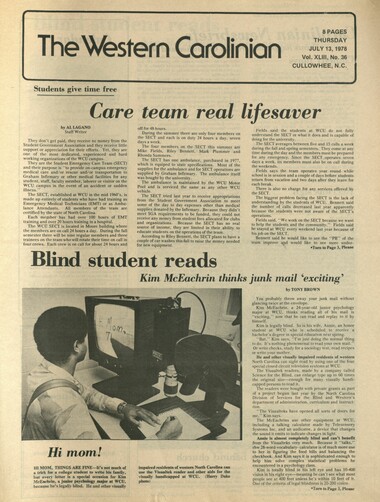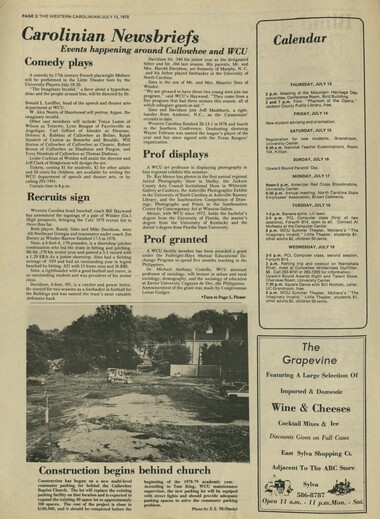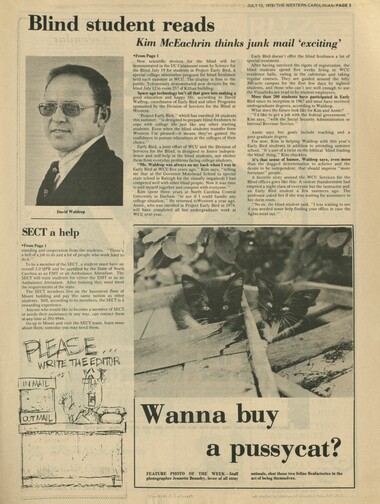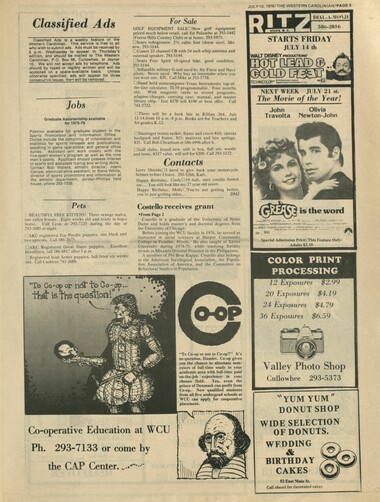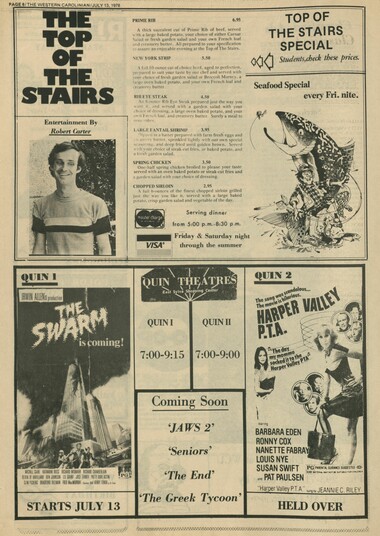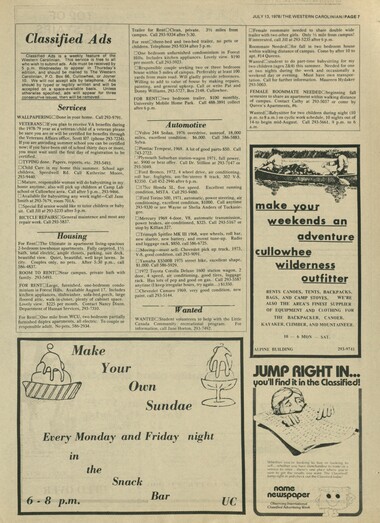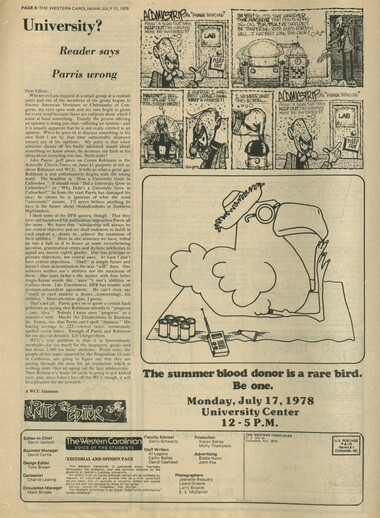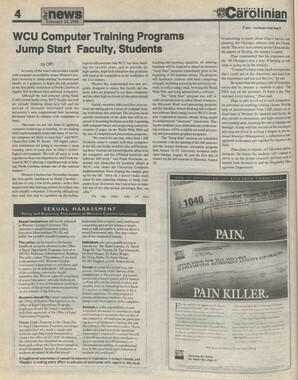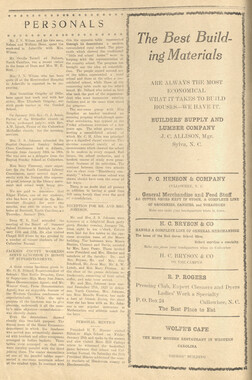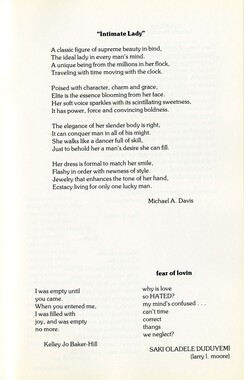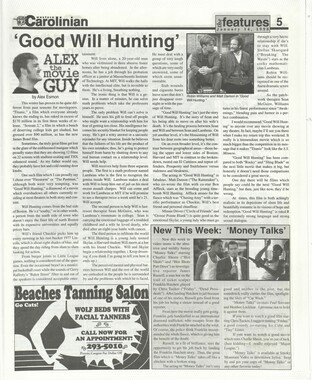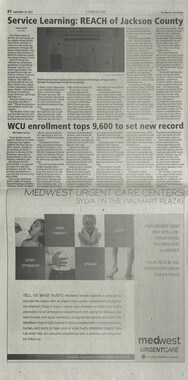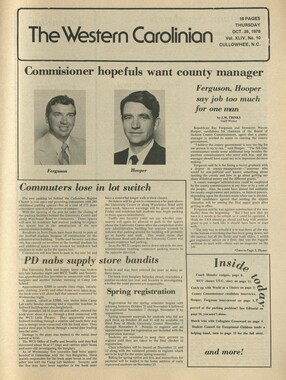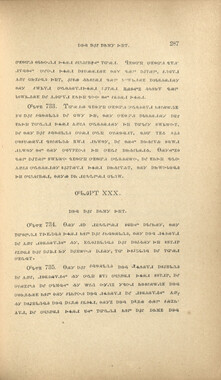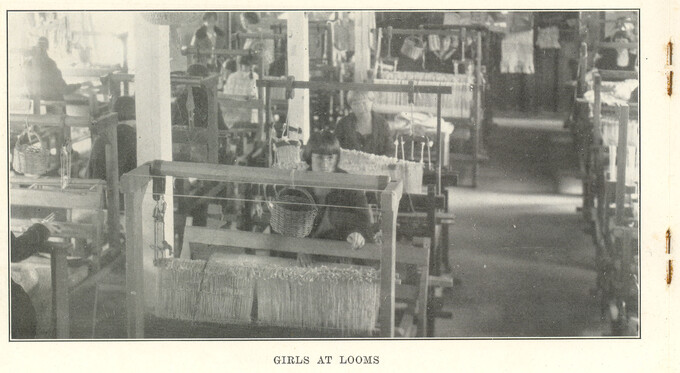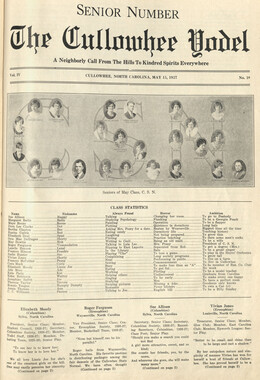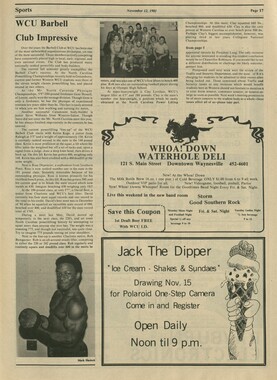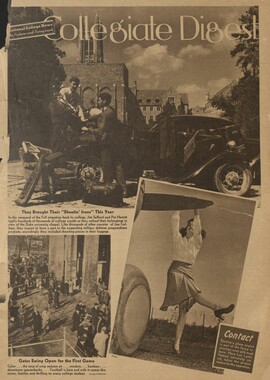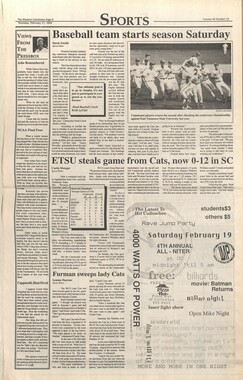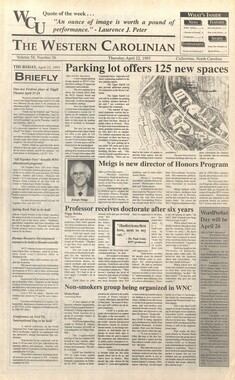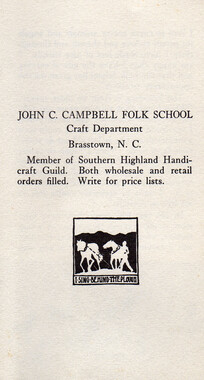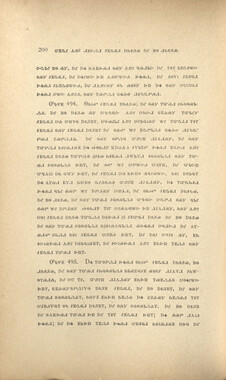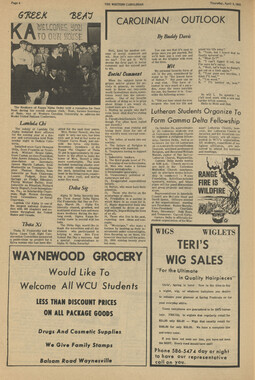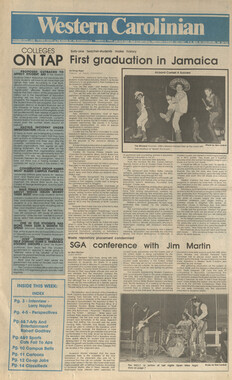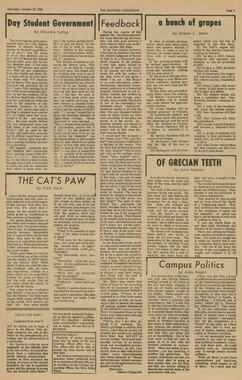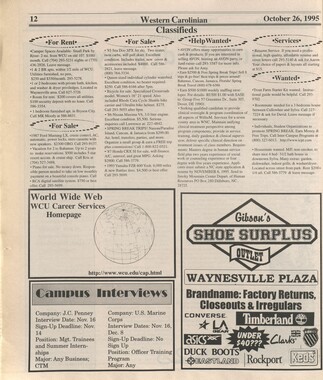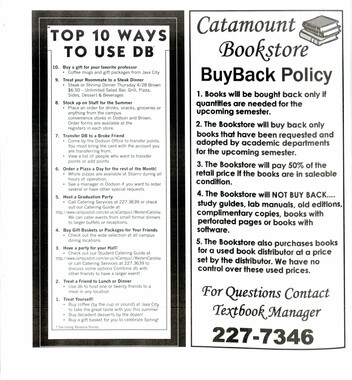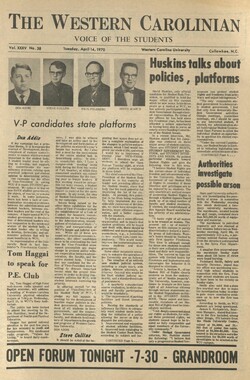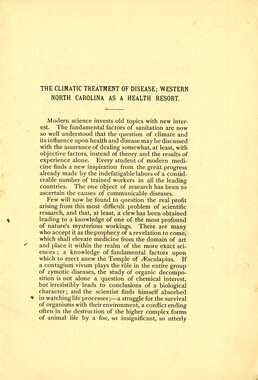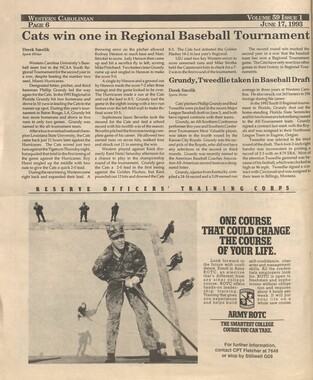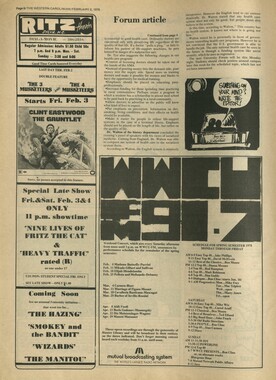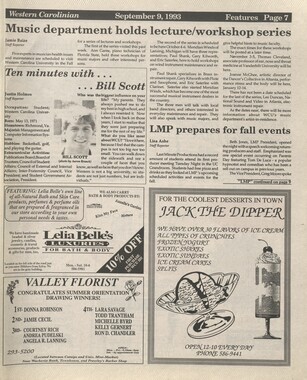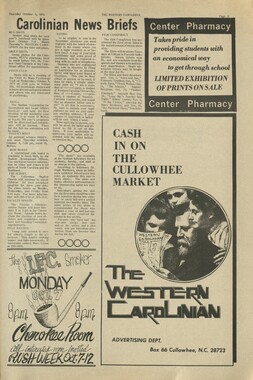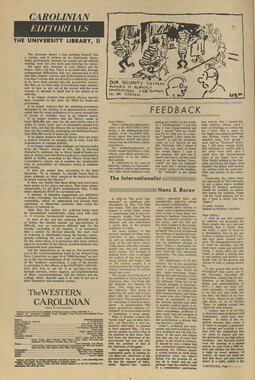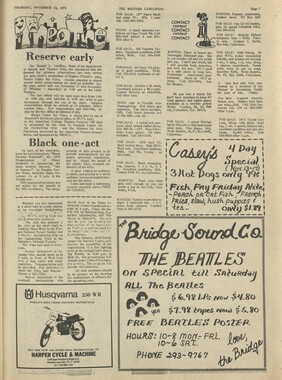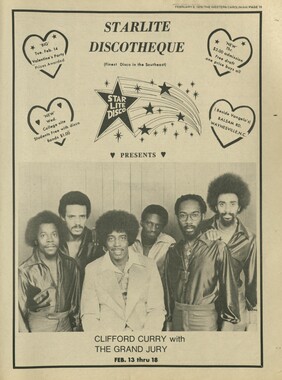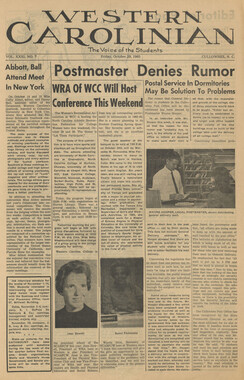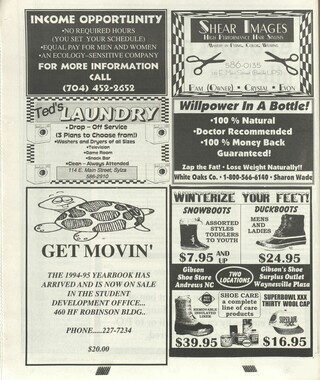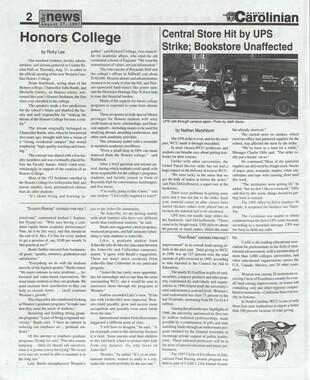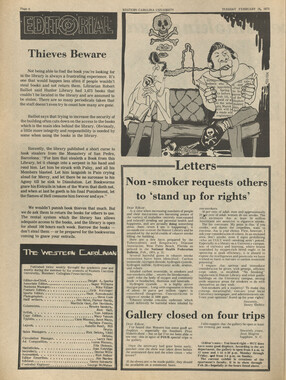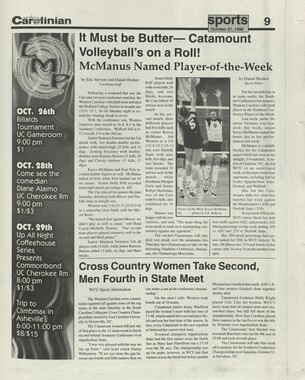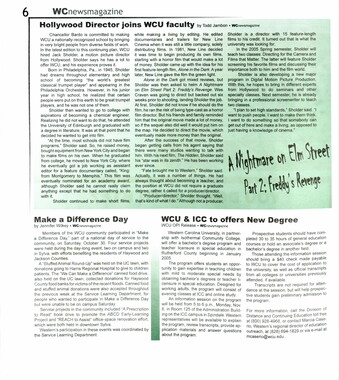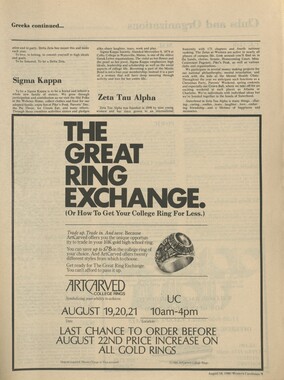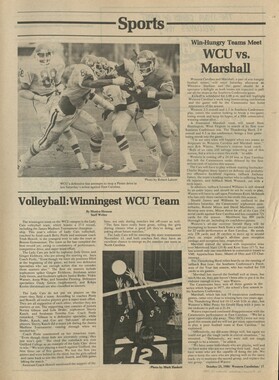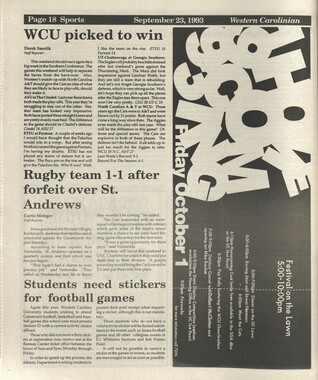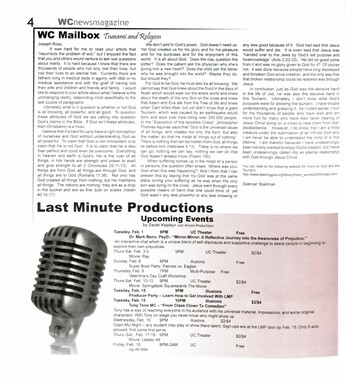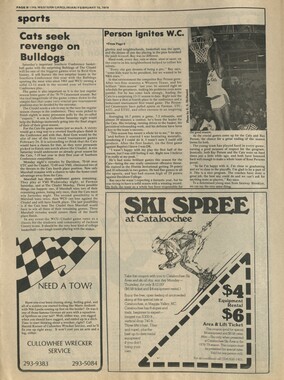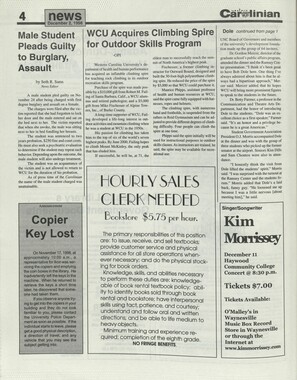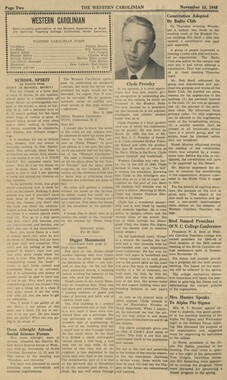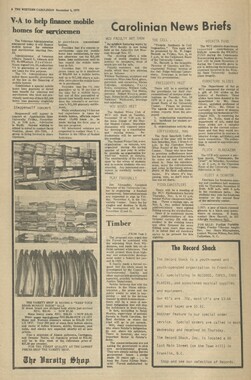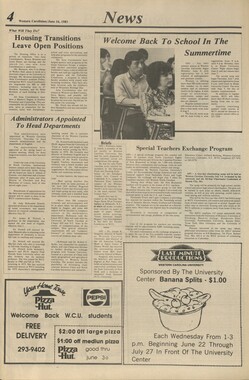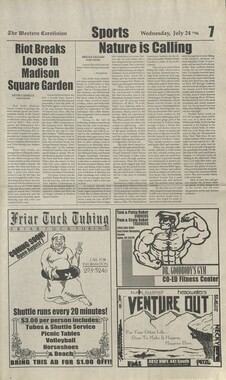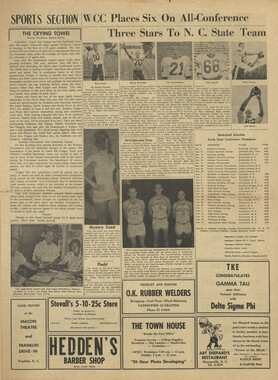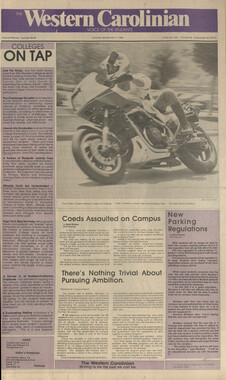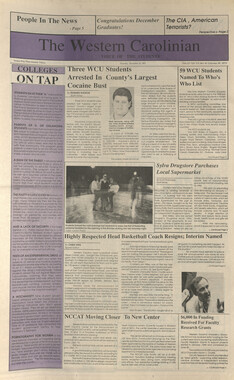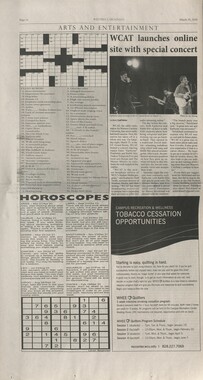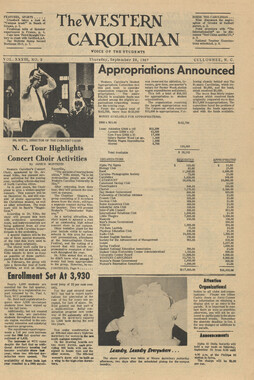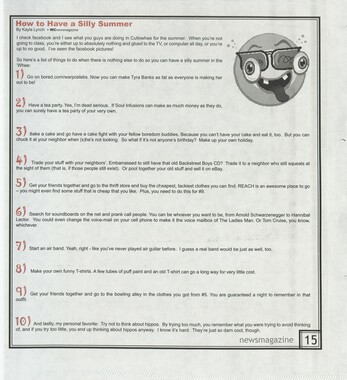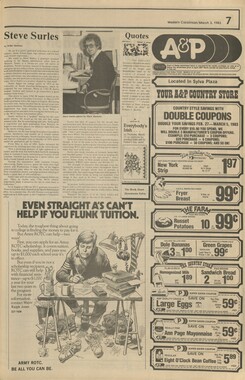Western Carolina University (21)
View all
- Canton Champion Fibre Company (2308)
- Cherokee Traditions (291)
- Civil War in Southern Appalachia (165)
- Craft Revival (1942)
- George Masa Collection (137)
- Great Smoky Mountains - A Park for America (3080)
- Highlights from Western Carolina University (422)
- Horace Kephart (973)
- Journeys Through Jackson (159)
- LGBTQIA+ Archive of Jackson County (89)
- Oral Histories of Western North Carolina (317)
- Picturing Appalachia (6617)
- Stories of Mountain Folk (413)
- Travel Western North Carolina (153)
- Western Carolina University Fine Art Museum Vitreograph Collection (129)
- Western Carolina University Herbarium (92)
- Western Carolina University: Making Memories (738)
- Western Carolina University Publications (2491)
- Western Carolina University Restricted Electronic Theses and Dissertations (146)
- Western North Carolina Regional Maps (71)
- World War II in Southern Appalachia (131)
University of North Carolina Asheville (6)
View all
- Allanstand Cottage Industries (62)
- Appalachian National Park Association (53)
- Bennett, Kelly, 1890-1974 (1463)
- Berry, Walter (76)
- Brasstown Carvers (40)
- Carver, George Washington, 1864?-1943 (26)
- Cathey, Joseph, 1803-1874 (1)
- Champion Fibre Company (233)
- Champion Paper and Fibre Company (297)
- Cherokee Indian Fair Association (16)
- Cherokee Language Program (22)
- Crowe, Amanda (40)
- Edmonston, Thomas Benton, 1842-1907 (7)
- Ensley, A. L. (Abraham Lincoln), 1865-1948 (275)
- Fromer, Irving Rhodes, 1913-1994 (70)
- George Butz (BFS 1907) (46)
- Goodrich, Frances Louisa (120)
- Grant, George Alexander, 1891-1964 (96)
- Heard, Marian Gladys (60)
- Kephart, Calvin, 1883-1969 (15)
- Kephart, Horace, 1862-1931 (313)
- Kephart, Laura, 1862-1954 (67)
- Laney, Gideon Thomas, 1889-1976 (439)
- Masa, George, 1881-1933 (61)
- McElhinney, William Julian, 1896-1953 (44)
- Niggli, Josephina, 1910-1983 (10)
- North Carolina Park Commission (105)
- Osborne, Kezia Stradley (9)
- Owens, Samuel Robert, 1918-1995 (11)
- Penland Weavers and Potters (36)
- Roberts, Vivienne (15)
- Roth, Albert, 1890-1974 (142)
- Schenck, Carl Alwin, 1868-1955 (1)
- Sherrill's Photography Studio (2565)
- Southern Highland Handicraft Guild (127)
- Southern Highlanders, Inc. (71)
- Stalcup, Jesse Bryson (46)
- Stearns, I. K. (213)
- Thompson, James Edward, 1880-1976 (226)
- United States. Indian Arts and Crafts Board (130)
- USFS (683)
- Vance, Zebulon Baird, 1830-1894 (1)
- Weaver, Zebulon, 1872-1948 (58)
- Western Carolina College (230)
- Western Carolina Teachers College (282)
- Western Carolina University (2008)
- Western Carolina University. Mountain Heritage Center (18)
- Whitman, Walt, 1819-1892 (10)
- Wilburn, Hiram Coleman, 1880-1967 (73)
- Williams, Isadora (3)
- Cain, Doreyl Ammons (0)
- Crittenden, Lorraine (0)
- Rhodes, Judy (0)
- Smith, Edward Clark (0)
- Appalachian Region, Southern (3032)
- Asheville (N.C.) (1945)
- Avery County (N.C.) (26)
- Blount County (Tenn.) (195)
- Buncombe County (N.C.) (1680)
- Cherokee County (N.C.) (283)
- Clay County (N.C.) (556)
- Graham County (N.C.) (238)
- Great Smoky Mountains National Park (N.C. and Tenn.) (525)
- Haywood County (N.C.) (3573)
- Henderson County (N.C.) (70)
- Jackson County (N.C.) (4924)
- Knox County (Tenn.) (35)
- Knoxville (Tenn.) (13)
- Lake Santeetlah (N.C.) (10)
- Macon County (N.C.) (421)
- Madison County (N.C.) (216)
- McDowell County (N.C.) (39)
- Mitchell County (N.C.) (135)
- Polk County (N.C.) (35)
- Qualla Boundary (982)
- Rutherford County (N.C.) (78)
- Swain County (N.C.) (2185)
- Transylvania County (N.C.) (270)
- Watauga County (N.C.) (12)
- Waynesville (N.C.) (86)
- Yancey County (N.C.) (72)
- Aerial Photographs (3)
- Aerial Views (60)
- Albums (books) (4)
- Articles (1)
- Artifacts (object Genre) (228)
- Bibliographies (1)
- Biography (general Genre) (2)
- Cards (information Artifacts) (38)
- Clippings (information Artifacts) (192)
- Copybooks (instructional Materials) (3)
- Crafts (art Genres) (622)
- Depictions (visual Works) (21)
- Design Drawings (1)
- Digital Moving Image Formats (2)
- Drawings (visual Works) (185)
- Envelopes (101)
- Exhibitions (events) (1)
- Facsimiles (reproductions) (1)
- Fiction (general Genre) (4)
- Financial Records (12)
- Fliers (printed Matter) (67)
- Glass Plate Negatives (381)
- Guidebooks (2)
- Internegatives (10)
- Interviews (822)
- Land Surveys (102)
- Letters (correspondence) (1045)
- Manuscripts (documents) (618)
- Maps (documents) (177)
- Memorandums (25)
- Minutes (administrative Records) (59)
- Negatives (photographs) (6090)
- Newsletters (1290)
- Newspapers (2)
- Notebooks (8)
- Occupation Currency (1)
- Paintings (visual Works) (1)
- Pen And Ink Drawings (1)
- Periodicals (194)
- Personal Narratives (10)
- Photographs (12977)
- Plans (maps) (1)
- Poetry (6)
- Portraits (4568)
- Postcards (329)
- Programs (documents) (181)
- Publications (documents) (2444)
- Questionnaires (65)
- Relief Prints (26)
- Sayings (literary Genre) (1)
- Scrapbooks (282)
- Sheet Music (2)
- Slides (photographs) (402)
- Songs (musical Compositions) (2)
- Sound Recordings (801)
- Specimens (92)
- Speeches (documents) (18)
- Tintypes (photographs) (8)
- Transcripts (328)
- Text Messages (0)
- A.L. Ensley Collection (275)
- Appalachian Industrial School Records (7)
- Appalachian National Park Association Records (336)
- Axley-Meroney Collection (2)
- Bayard Wootten Photograph Collection (20)
- Bethel Rural Community Organization Collection (7)
- Blumer Collection (5)
- C.W. Slagle Collection (20)
- Canton Area Historical Museum (2110)
- Carlos C. Campbell Collection (462)
- Cataloochee History Project (64)
- Cherokee Studies Collection (4)
- Daisy Dame Photograph Album (5)
- Daniel Boone VI Collection (1)
- Doris Ulmann Photograph Collection (112)
- Elizabeth H. Lasley Collection (1)
- Elizabeth Woolworth Szold Fleharty Collection (4)
- Frank Fry Collection (95)
- George Masa Collection (173)
- Gideon Laney Collection (452)
- Hazel Scarborough Collection (2)
- Hiram C. Wilburn Papers (28)
- Historic Photographs Collection (236)
- Horace Kephart Collection (861)
- Humbard Collection (33)
- Hunter and Weaver Families Collection (1)
- I. D. Blumenthal Collection (4)
- Isadora Williams Collection (4)
- Jesse Bryson Stalcup Collection (47)
- Jim Thompson Collection (224)
- John B. Battle Collection (7)
- John C. Campbell Folk School Records (80)
- John Parris Collection (6)
- Judaculla Rock project (2)
- Kelly Bennett Collection (1482)
- Love Family Papers (11)
- Major Wiley Parris Civil War Letters (3)
- Map Collection (12)
- McFee-Misemer Civil War Letters (34)
- Mountain Heritage Center Collection (4)
- Norburn - Robertson - Thomson Families Collection (44)
- Pauline Hood Collection (7)
- Pre-Guild Collection (2)
- Qualla Arts and Crafts Mutual Collection (12)
- R.A. Romanes Collection (681)
- Rosser H. Taylor Collection (1)
- Samuel Robert Owens Collection (94)
- Sara Madison Collection (144)
- Sherrill Studio Photo Collection (2558)
- Smoky Mountains Hiking Club Collection (616)
- Stories of Mountain Folk - Radio Programs (374)
- The Reporter, Western Carolina University (510)
- Venoy and Elizabeth Reed Collection (16)
- WCU Gender and Sexuality Oral History Project (36)
- WCU Mountain Heritage Center Oral Histories (25)
- WCU Oral History Collection - Mountain People, Mountain Lives (71)
- WCU Students Newspapers Collection (1923)
- Western North Carolina Tomorrow Black Oral History Project (69)
- William Williams Stringfield Collection (2)
- Zebulon Weaver Collection (109)
- African Americans (390)
- Appalachian Trail (35)
- Artisans (521)
- Cherokee art (84)
- Cherokee artists -- North Carolina (10)
- Cherokee language (21)
- Cherokee pottery (101)
- Cherokee women (208)
- Church buildings (190)
- Civilian Conservation Corps (U.S.) (111)
- College student newspapers and periodicals (2012)
- Dams (108)
- Dance (1023)
- Education (222)
- Floods (63)
- Folk music (1015)
- Forced removal, 1813-1903 (2)
- Forest conservation (220)
- Forests and forestry (1198)
- Gender nonconformity (4)
- Great Smoky Mountains National Park (N.C. and Tenn.) (181)
- Hunting (47)
- Landscape photography (25)
- Logging (122)
- Maps (83)
- Mines and mineral resources (9)
- North Carolina -- Maps (18)
- Paper industry (38)
- Postcards (255)
- Pottery (135)
- Railroad trains (72)
- Rural electrification -- North Carolina, Western (3)
- School integration -- Southern States (2)
- Segregation -- North Carolina, Western (5)
- Slavery (5)
- Sports (452)
- Storytelling (243)
- Waterfalls -- Great Smoky Mountains (N.C. and Tenn.) (66)
- Weaving -- Appalachian Region, Southern (280)
- Wood-carving -- Appalachian Region, Southern (328)
- World War, 1939-1945 (173)
Western Carolinian Volume 43 Number 36
Item
Item’s are ‘child’ level descriptions to ‘parent’ objects, (e.g. one page of a whole book).
-
-
The^Xfestern Carolinian 8 PAGES THURSDAY JULY 13,1978 Vol. XLIII, No. 36 CULLOWHEE, N.C. Students give time free Care team real lifesaver by AL LAGANO Staff Writer They don't get paid, they receive no money from the Student Government Association and they receive little support or appreciation for their efforts. Yet, they are one of the most dedicated, experienced and hard working organizations of the WCU campus. They are the Student Emergency Care Team (SECT) and their purpose is "to provide on-campus emergency medical care and/or rescue and/or transportation to Graham Infirmary or other medical facilities for any student, staff, faculty member, laborer or visitor on the WCU campus in the event of an accident or sudden illness." The SECT, established at WCU in the mid 1960's, is made up entirely of students who have had training as Emergency Medical Technicians (EMT) or as Ambulance Attendants. All members of the team are certified by the state of North Carolina. Each member has had over 100 hours of EMT training and over 20 hours training in a hospital. The WCU SECT is located in Moore building where the members are on call 24 hours a day. During the fall semester there will be nine regular members and three trainees on the team who will rotate their time on call in four crews. Each crew is on call for about 24 hours and off tor 48 hours. During the summer there are only four members on the SECT and each is on duty 24 hours a day, seven days a week. The four members on the SECT this summer are Mike Fields, Riley Bennett. Mark Plummer and Rhonda Summers. The SECT has one ambulance, purchased in 1977, which is equiped to state specifications. Most of the supplies for the ambulance and for SECT operations are supplied by Graham Infirmary. The ambulance itself was bought by the university. The ambulance is maintained by the WCU Motor Pool and is serviced the same as any other WCU vehicle. The SECT tried last year to receive appropriations from the Student Government Association to meet some of the day to day expenses other than medical supplies donated by the Infirmary. Because they didn't meet SGA requirements to be funded, they could not receive any money from student fees allocated for clubs and organizations. Because the SECT has no real source of income, they are limited in their ability to educate students on the operations of the team. According to Riley Bennett, the SECT plans to have a couple of car washes this fall to raise the money needed for new equipment. Blind student reads Fields said the students at WCU do not fully understand the SECT or what il does and is capable of doing for the university. The SECT averages between five and 15 calls a week during the fall and spring semesters. They come al anv time during the day and the members must be prepared for any emergency. Since the SECT operates seven days a week, its members must also be on call during the weekends. Fields says the team operates year round while school is in session and a couple of days before students return from vacation and two days after they leave for each break. There is also no charge for any services offered by the SECT. The biggest problem facing the SECT is the lack of understanding by the students of WCU. Bennett said the number of calls decreased last year apparently because the students were not aware of the SECT's operations. Fields said, "We work on the SECT because we want to help the students and the community." Fields said he stayed at WCU every weekend last year because of his job on the SECT. Bennett said he would like to see the "PR" of the team improve and would like to see more under- •Turn to Page 3, Please Kim McEachrin thinks junk mail 'exciting Hi mom! HI MOM, THINGS ARE FINE—It's not much of a trick for a college student to write his family, but every letter is a special occasion for Kim McEachrin, a junior psychology major at WCU, because he's legally blind. He and other visually impaired residents of western North Carolina can use the Visualtek reader and other aids for the visually handicapped at WCU. (Harry Duke photo) by TONY BROWN You probably throw away your junk mail without glancing twice at the envelope. Kim McEachrin, a 24-year-old junior psychology major at WCU, thinks reading all of his mail is "exciting," now that he can read and replay to it by himself. Kim is legally blind. So is his wife, Annie, an honor student at WCU who is scheduled to receive a bachelor's degree in special education next spring. "But," Kim says, "I'm just doing the normal thing to do. It's nothing phenomenal to read your own mail." Or write checks, study for a sociology test, read recipes or write your mother. He and other visually impaired residents of western North Carolina can sight read by using one of the four special closed circuit television systems at WCU. The Visualtek readers, made by a company called Science for the Blind, can enlarge type up to 60 times the original size—enough for many visually handicapped persons to read it. The readers were bought with private grants as part of a project begun last year by the North Carolina Division of Services for the Blind and Western's department of administration, curriculum and instruction. "The Visualteks have opened all sorts of doors for me," Kim says. The McEachrins use other equipment at WCU, including a talking calculator made by Telesensory Systems Inc. and an audicator, a device that changes the sound it emits to indicate changes in light. Annie is almost completely blind and can't benefit from the Visualteks very much. Because it "talks," rhw 28-word-vocabulary- calculator is of much more use to her in figuring the food bills and balancing the checkbook. And Kim says it is sophisticated enough to help him solve complex statistical problems he encountered in a psychology class. Kim is totally blind in his left eye and has 10-400 vision in his right eye—meaning he can't see what most people see at 400 feet unless he's within 10 feet of it. One of the criteria of legal blindness is 20-200 vision. •Turn to Page 3, Please
Object
Object’s are ‘parent’ level descriptions to ‘children’ items, (e.g. a book with pages).
-
The Western Carolinian is Western Carolina University’s student-run newspaper. The paper was published as the Cullowhee Yodel from 1924 to 1931 before changing its name to The Western Carolinian in 1933.
-
